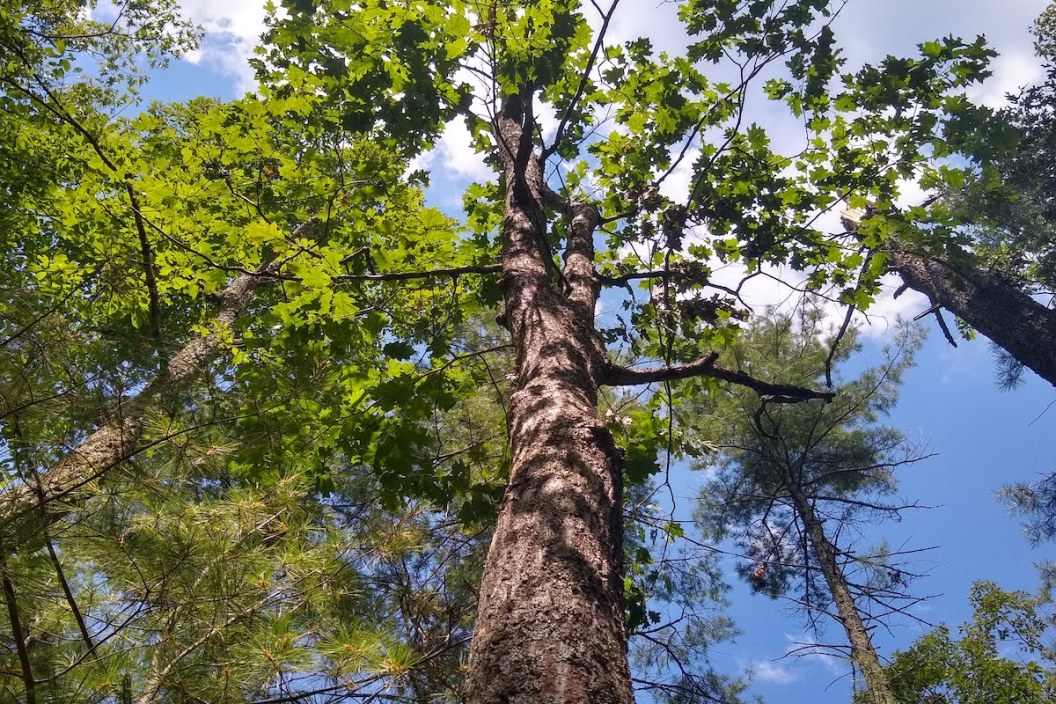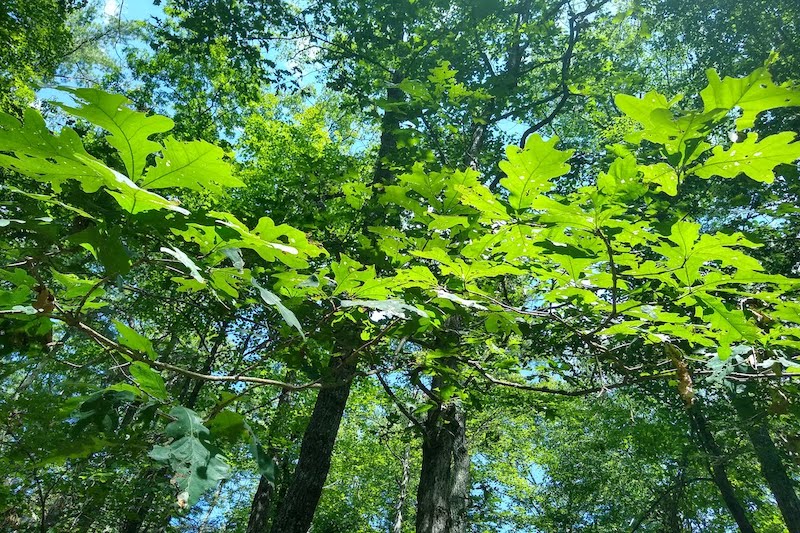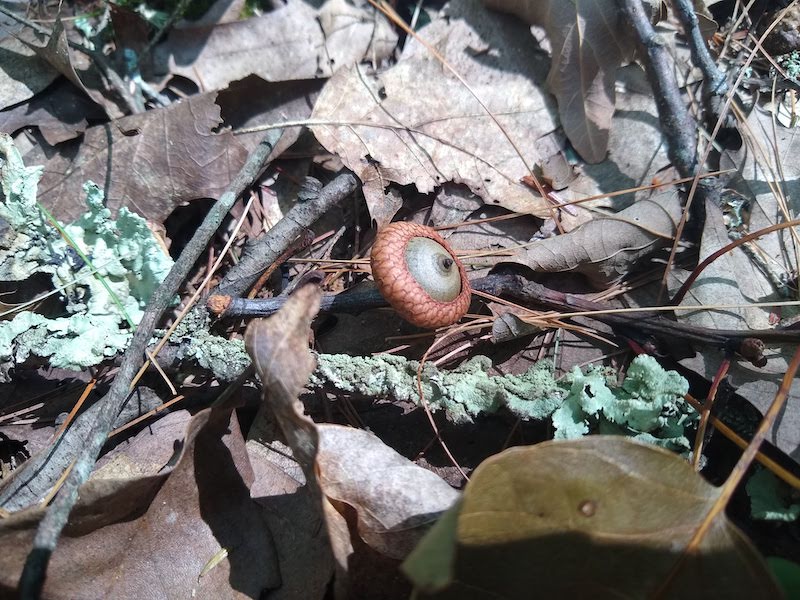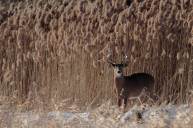Deer absolutely love to eat acorns, and that results in a unique hunting advantage. Acorns are one of nature's most nutritious wild foods and they only come from one source: oak trees. As deer hunters, we give high value to oaks as food sources that whitetail deer will cling to, especially in the harshness of winter. Oak trees are impressive because of their looks, their benefit to wildlife, and their carbon sequestration abilities, but what do we really know about them? While there are many varieties of oak trees in North America, there are two basic types: red oaks and white oaks. Let's take a close look at these, what nuts they produce, and how deer relate to each.
Red Oaks (Quercus rubra)
Red oaks generally have pointed lobes on their leaves, although some varieties appear a bit more rounded. Red oaks like black oaks and pin oaks are some of the most common varieties with pointed leaves. These beautiful deciduous trees are more native to the eastern U.S. and often known for their insanely gorgeous fall foliage. Amazingly, they can live anywhere from 150 to 250 years and can average a whopping 75 feet in height.
Red oaks have a bad reputation among hunters for their supposedly-bitter acorns, but pin oaks have some of the sweetest acorns of them all. Deer in search of food are going to eat the acorns they find, but in mast years might walk by red oak acorns to find their preferred mouthful of the whites. If you can quickly determine the differences, you can likely make good hunting decisions based on the presence or location of red oaks.
White Oaks (Quercus alba)
White oaks are one of the most beloved trees in North America. They are natives to the east and central parts of the nation as far south as northern Florida and eastern Texas, and are even found across the border into Canada. They can grow to heights of 70 to 90 feet and have been documented achieving a lifespan of over 200 years.
White oaks don't reach their sexual maturity until around 20 years of age, but these trees usually don't produce large crops of acorns until they get closer to their 50th year. White oaks are readily identified by their rounded leaves, as opposed to the more serrated red oak leaves, but some specimens of both versions can be similar to each other. White oak acorns are known to have less tannin in their nuts than those of the red oak species, making them much more palatable to deer and other wildlife. The largest, tastiest acorns generally come from white oaks such as east coast white oak and burr oak, just to name a few.
Acorns and Deer
Whether from nature or divine providence, an acorn bounty comes every year around the month of October during the early rut. This is a time when bucks especially need the added protein. Most oak trees drop their acorns to propagate the species at this time, giving many animals a much needed boost of nutrition right at the onset of winter.
White oaks usually drop their acorns before the reds, making early bowhunting season ideal for the hunter set up near a white oak cluster, usually on routes coming or going from these feeding areas. I've hunted oak stands for many years and my personal preference has always been to set up near areas where they feed, not right on top of them. This is because they tend to settle down once they've found food, giving me a better opportunity.
Tannins are nature's preservative, causing the red oak nuts last longer on the ground. Since the white oaks have fewer preservative tannins, deer (and especially feral hogs) will eat them faster, but they also deteriorate more quickly, giving them less of a chance to germinate naturally.
Sometimes, the best thing that can happen is a new snowfall that covers them up, forcing the deer to stop and dig. This action keeps their heads down and their senses occupied. During a mast year, this is especially true since it brings does and yearlings, and there is nothing better than the attraction of several deer feeding to calm bucks down. Those males that are still rutting but have been pressured will welcome an opportunity to catch their breath and relax a bit. That's when you can truly take advantage.
Since red oak acorns last longer on the ground, they're also the most weathered—by the time the later parts of the season have rolled around, much of the tannins have leached away. Don't ignore red oak acorns— deer will eat them, but sometimes they don't target them until later in the season. Some folks call them "rut nuts" for that exact reason.
How much the deer in your area will feed on acorns often comes down to weather, time of the year, and other available food sources, but they will almost always eat some. In my home area, they will dig with abandon to find them under the snow long into the winter, even with farm fields in the vicinity that offer leftover waste grains. That tells me how much they love them, and gives me more reason to base my hunting strategies around oaks. It's worth it, and you should apply it to your hunts, too.
Please check out my book "The Hunter's Way" from HarperCollins. Be sure to follow my webpage, or on Facebook and YouTube.







